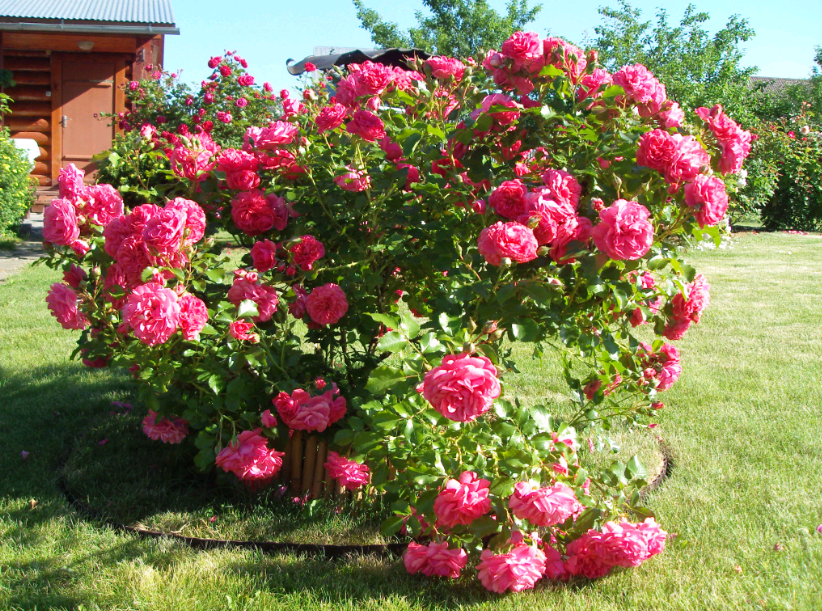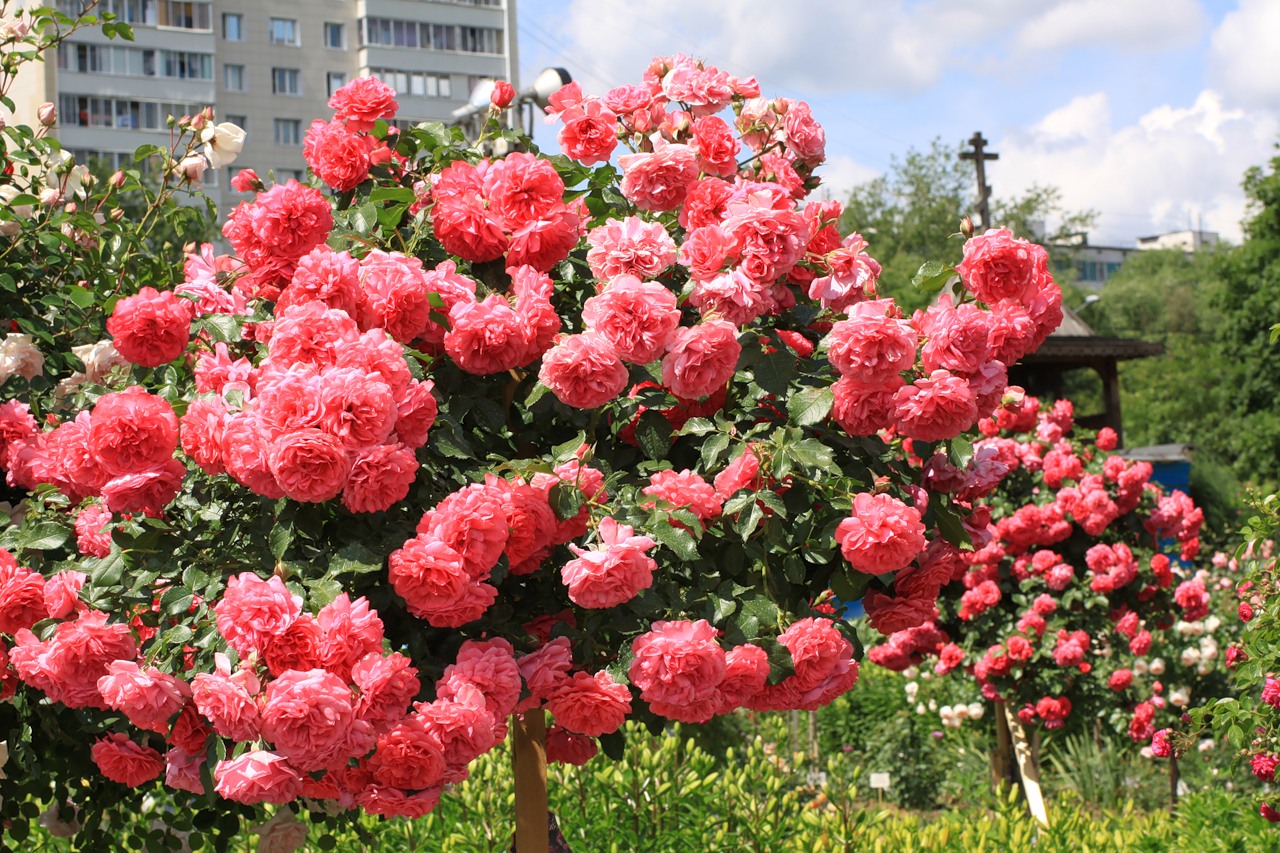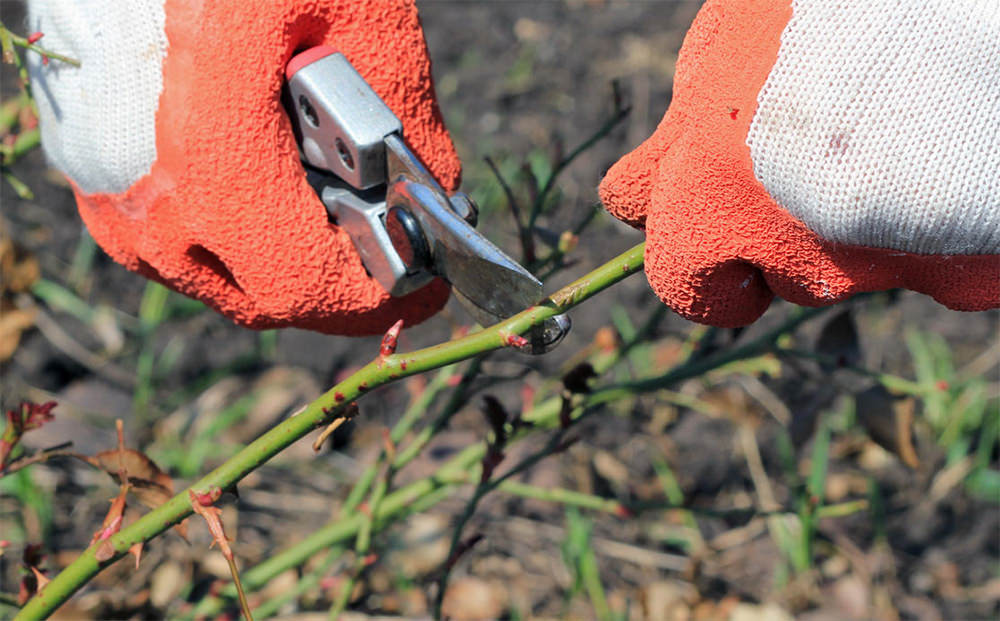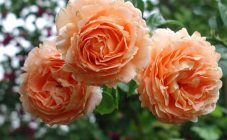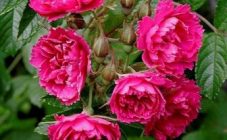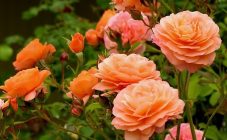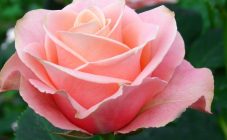Content:
The brightest among the climbing roses of the group of climbers is the Utersen Rosarium. Climbers are considered climbing roses, which are characterized by repeated flowering. Also, this group of roses is distinguished by longer shoots and large flowers. The rose can reach 4 meters in height and up to 1.5 meters in width. It has strong and slightly prickly thick shoots. Despite the climbing ability, Rosarium Uetersen rose also looks good as a bush. It can be used to plant greenery on the entrance groups of buildings and other structures. Rosarium Uthersen is not a ground cover variety. She needs pruning and shelter for the winter in order to successfully endure the cold.
General information about climbing rose
A distinctive feature of climbing roses is the twisty shoots that can grow up to several meters long. If there is any support near the bush of this rose, then it will be quickly captured by the long and flexible branches of the flower.
Thanks to this feature of a climbing rose, it can be used to decorate any garden structure or vertically plant a building, plant walls or pergolas. In addition, these roses have a very varied color, so they can be used to play up the garden design in an interesting way.
Climbing roses include both single and re-flowering species. The species that bloom again includes the Uetersener Klosterrose rose, and it also belongs to the climber class. Rose Uetersener Klosterrose has a delicate pink color in a bowl shape and has a slight rose hip scent. The height of the bush reaches from 2.5 to 3 meters.
The history of the creation of the varietyRosarium Utersen
Rosarium Uetersen is a large-flowered rose from the German collection. The variety was obtained by crossing the Karlsruhe rose with an unknown seedling in 1957. This cross was obtained by Reimer Cordes, one of the founders of the company for the selection and production of roses "Wilhelm Cordes and Sons".
The name of the variety is associated with the Uetersen rose garden, which is one of the largest and oldest in Germany. The variety received its registration in 1977. There are two variations of it:
- Rose Uetersens Rosenprinzessin (Rose Uetersens Rosenprinzessin) - has double flowers blooming all season, delicate pink flowers. A powerful and vigorous plant reaches a height of 150 cm. The size of the whole bush is 150 × 100 cm. Uetersens Rosenprinzessin is a rose with very strong shoots. Leaves are medium, glossy, dark green;
- Rose Uetersen Rosenkonigin (Rose Uetersens Rosenkonigin) - has dense double flowers of salmon-red color. Each bud has up to 75 petals.Uetersens Rosenkonigin is a lightly scented rose. Rose Uterzens Rosenkonigin blooms profusely, up to frost. During the period of mass flowering, from 5 to 10 flowers are located on one peduncle at once.
Rose Rosarium Utersen: characteristics and description
Climbing rose Rosarium Uthersen has double and large flowers with a diameter of 9 to 12 centimeters, which have about one hundred wavy petals adjacent to each other.
As the rose blooms, it changes its shape from a rounded-pointed bud to a bowl-like shape.
The color of the buds is bright pink. When they fully bloom, they have a silvery pink tint. Flowers in the amount of 3 to 5 flowers form loose brushes. Up to 40 flowers bloom on the shoot.
It blooms profusely and in waves from June to early September. For the first time it blooms so luxuriantly that large green leaves are completely hidden behind a dense crown of blossoming buds. After the first wave of flowering, the number of flowers is sharply reduced, but the buds still appear until autumn, in several pieces. It is possible to ensure that the flowering becomes periodic and uniform until the very frost, if you carry out the correct pruning.
The leaves of the plant are glossy, large, dark green or green. It practically does not get sick, including diseases such as powdery mildew and black spot. Rose Rosarium has high resistance to frost down to -30 ° C and perfectly tolerates winter under light shelters. The rose can also be grown in the form of a trunk and form a crown that is round and lush.
Agrotechnology of cultivation and features of rose care
Despite the fact that a seedling can be planted in the spring, the most favorable period for this process is autumn. Before planting a seedling in the soil, it is necessary to trim its roots to 25 cm, and also keep them for 5-6 hours in water, to which a growth stimulator has been added. Then you can proceed to landing.
A hole is dug to a depth and width of 50 cm. Organic fertilizer is first added to it, for example, sufficiently moistened rotted manure. Only then the seedling is immersed in the hole. Its neck and roots are covered with soil. At least half a bucket of fertilizer is added to one well.
The neck of the seedling should be covered with soil by 5-6 cm.
If the planting was carried out in the autumn, it is necessary to cover the seedling with non-woven material. In the case when the planting was carried out in the spring, it is not necessary to cover the plant.
The rose likes humus-rich, well-drained and moderately moist soil. Caring for the plant consists in carrying out timely watering, fertilizing the soil, trimming the bush.
In the summer, the rose is irrigated once a week. Irrigation is carried out at the rate of at least 1 bucket of water for each bush. In the event that the summer turned out to be dry, watering is carried out more often. In this case, irrigation is carried out as the top layer of the earth dries up.
The rose also needs pruning. It is better to spend it in spring or autumn. Pruning not only helps prevent the bushes from becoming too thick, but also ensures a long and plentiful flowering period.
Through pruning, Rosarium Uetersen is grown as a bush up to 2 meters high and wide. It can also be grown in the form of climbing, having shoots up to 3 meters long. In this case, the flower must be tied to a support.Reproduction is carried out by cuttings and rooting of cuttings.
Advantages and disadvantages of the variety in comparison with other varieties
Rosa Utersen has many virtues. Among them, one can distinguish, first of all, good resistance to diseases, as a result of which it will cause little trouble in caring for it. The flower also has good endurance in bad weather: rain or strong wind. Boasts high endurance in low temperatures. And of course, the advantages include its abundant flowering and beautiful flower buds.
The flower also has disadvantages, but there are not so many of them. Rose Utersen has a faint aroma, its shoots grow slowly and it itself is very prickly.
The Utersen Rosarium is a good option for those who want to decorate the garden with climbing pink shoots. It will be a wonderful decoration for arches, gazebos or even the walls of a house.
